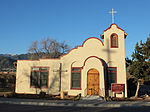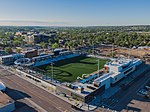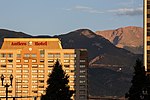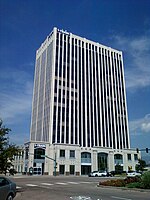United States Olympic & Paralympic Museum
2020 establishments in ColoradoMuseums established in 2020Museums in Colorado Springs, ColoradoSports museums in ColoradoUnited States Olympic Committee ... and 1 more
Use mdy dates from December 2021

The United States Olympic & Paralympic Museum (USOPM) is a historical and cultural sports museum located in Colorado Springs, Colorado, United States, first opened on July 30, 2020. The museum is part of the City for Champions development project in Colorado Springs, though it licenses the Olympic name and operates separately from the United States Olympic & Paralympic Committee (USOPC). The museum recognizes Olympic and Paralympic athletes who have represented Team USA.
Excerpt from the Wikipedia article United States Olympic & Paralympic Museum (License: CC BY-SA 3.0, Authors, Images).United States Olympic & Paralympic Museum
South Sierra Madre Street, Colorado Springs
Geographical coordinates (GPS) Address Phone number Website Nearby Places Show on map
Geographical coordinates (GPS)
| Latitude | Longitude |
|---|---|
| N 38.8295 ° | E -104.8296 ° |
Address
U.S. Olympic and Paralympic Museum
South Sierra Madre Street 200
80905 Colorado Springs
Colorado, United States
Open on Google Maps










